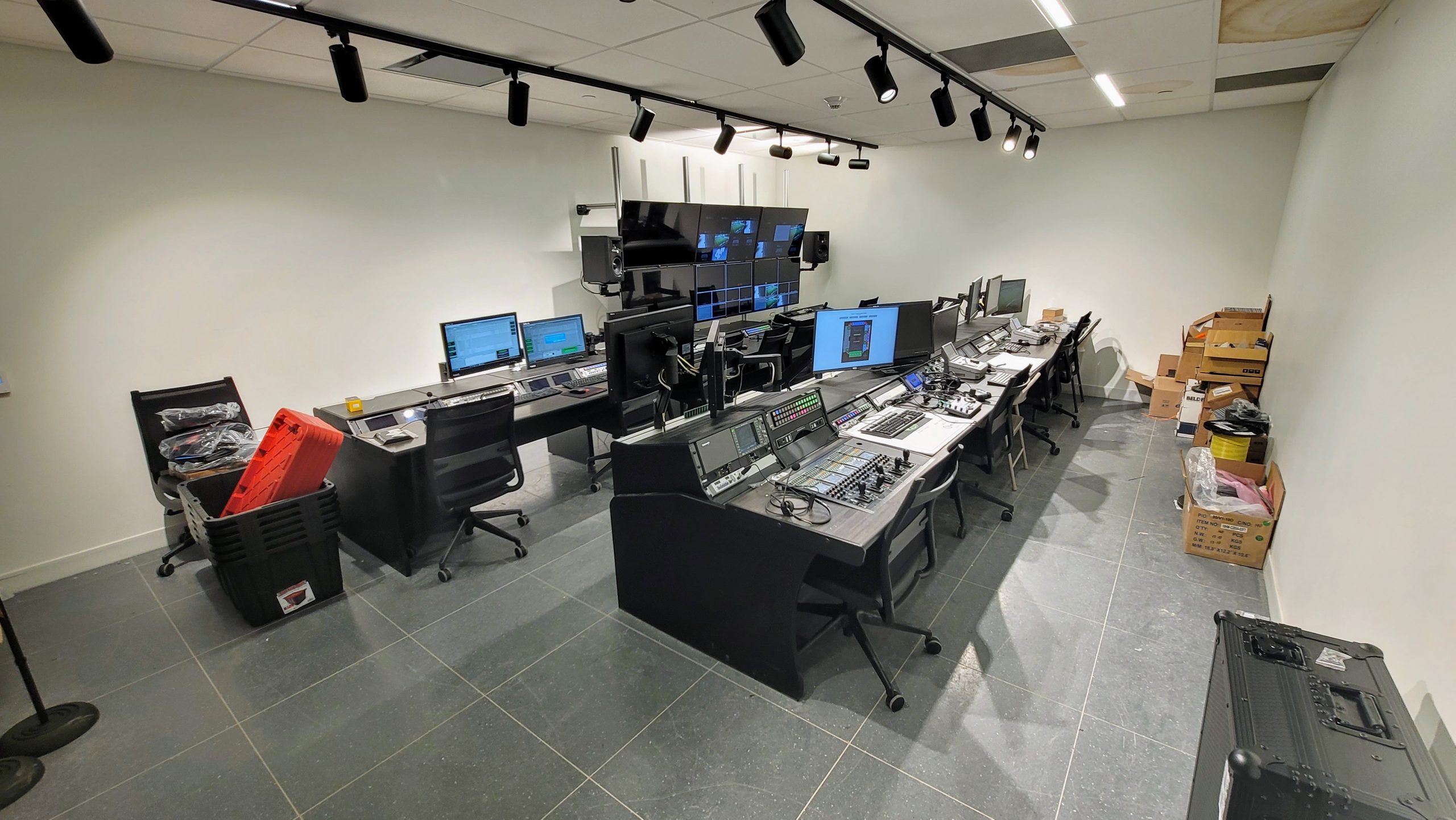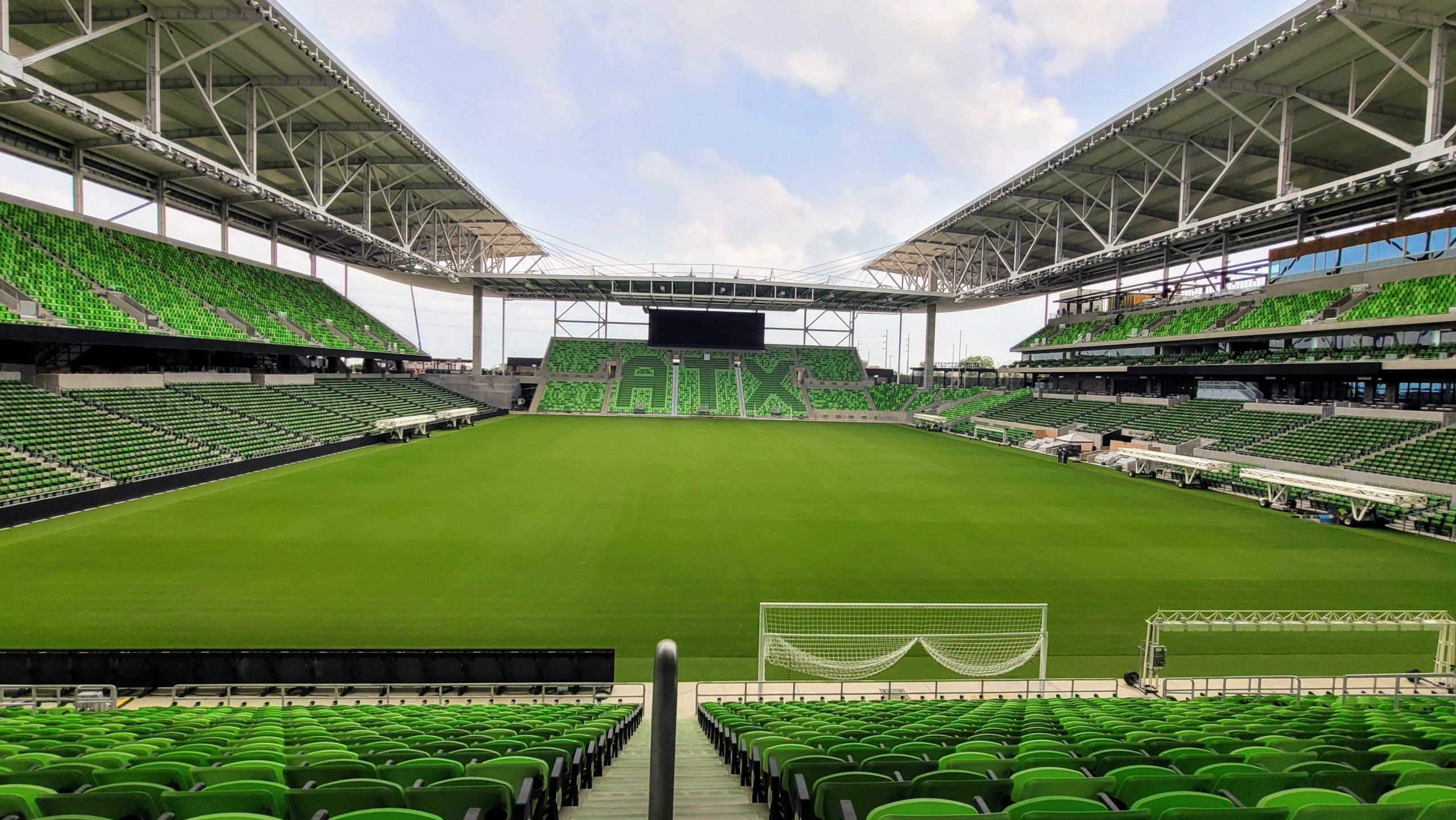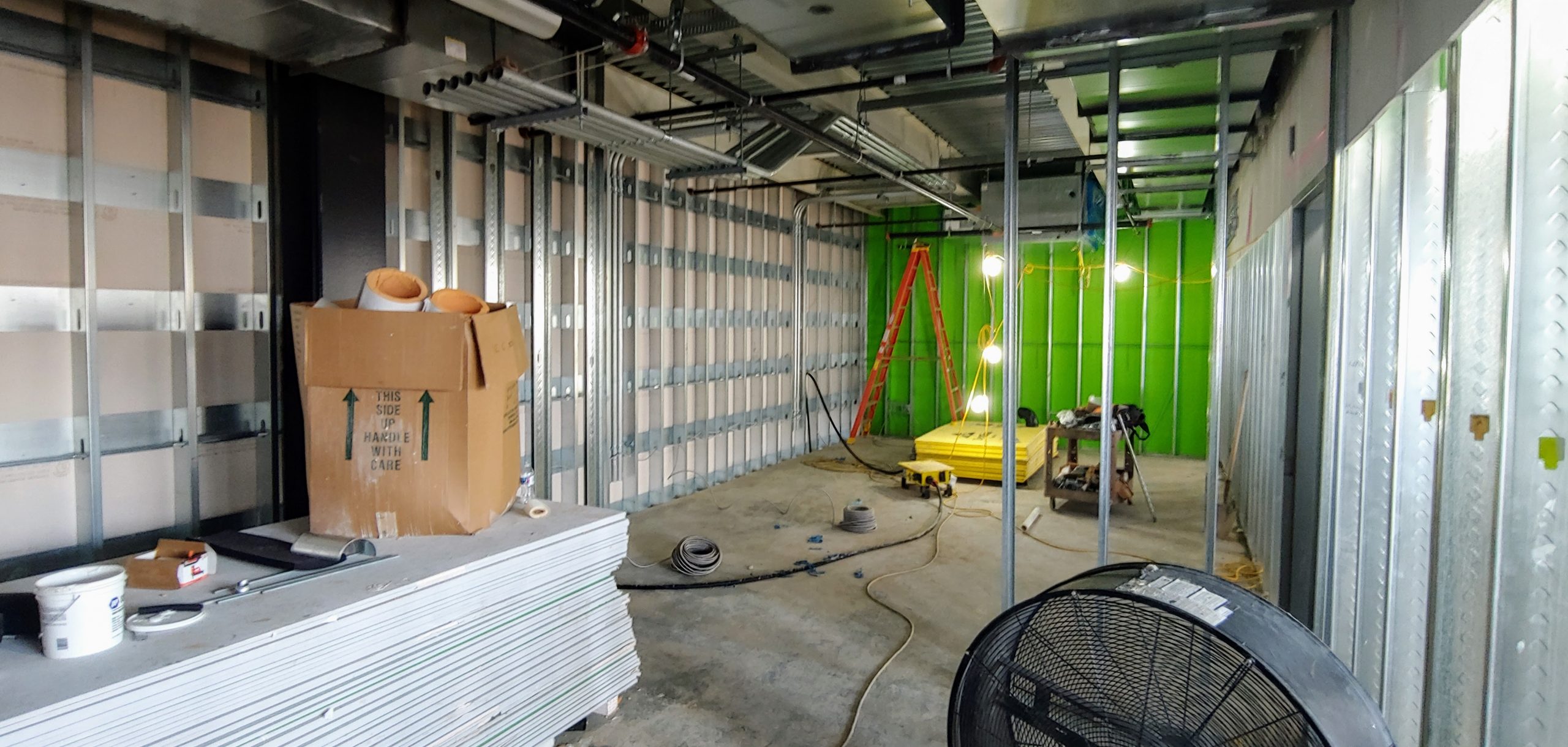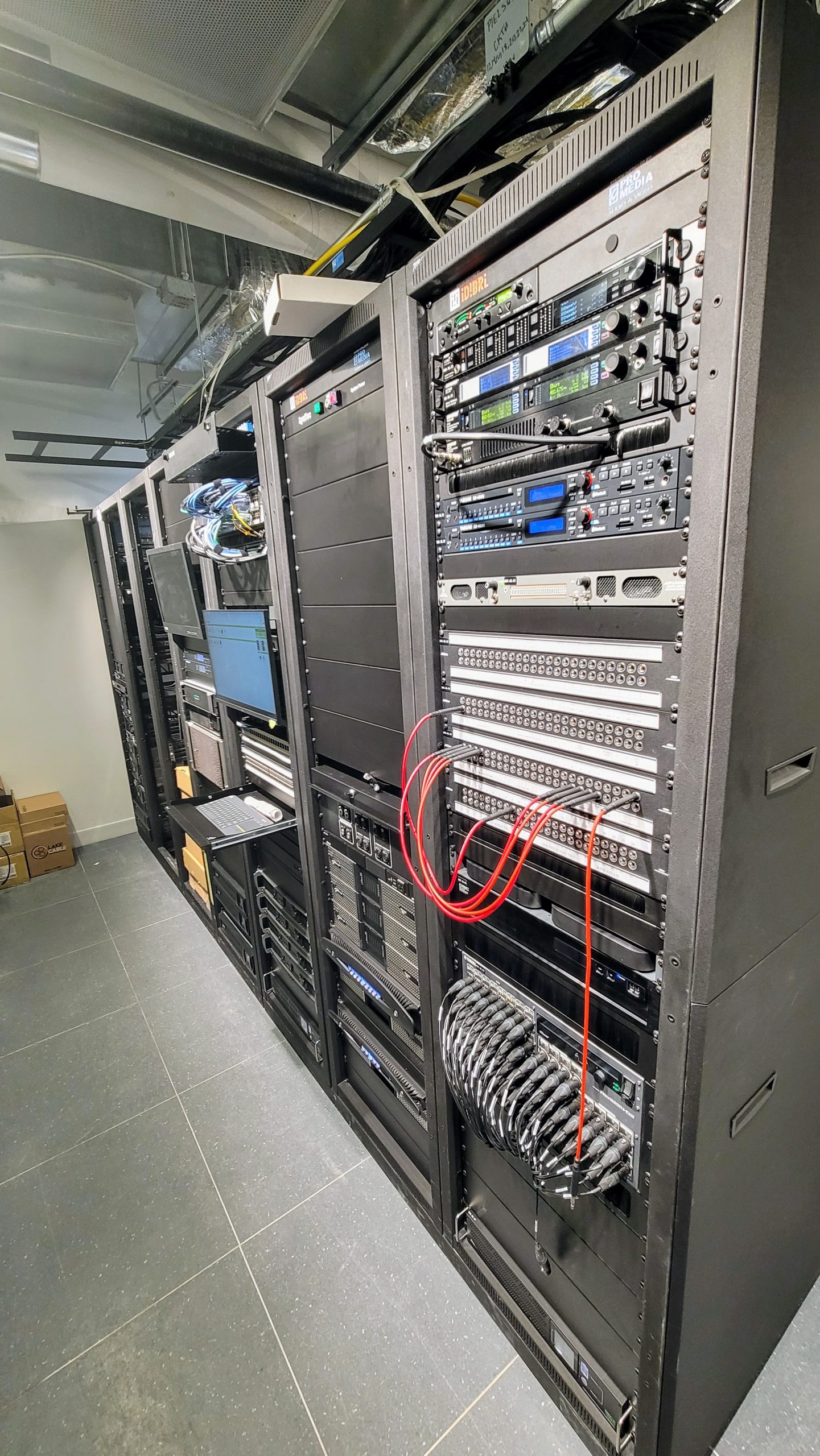MLS’s Austin FC Highlights Inaugural Season With Debut of Q2 Stadium
The club played its first home match, vs. San Jose, on June 19
Story Highlights
The state of Texas is filled with professional sports, 13 teams to be exact, but none have created more excitement than Austin FC. The club has drawn positive headlines for many reasons since the start of the season, including as the 27th and newest organization in Major League Soccer and the announcement of Matthew McConaughey as a minority owner. But the biggest reason was the opening of the team’s new home: Q2 Stadium. One of three new venues in the league, the stadium first welcomed patrons on Saturday, June 19 for the team’s match vs. San Jose Earthquakes, and its christening is another feather in the crowded Stetson of Texas sports.
Arduous Process: Club and Diversified Navigate COVID-19, Sudden Snowstorm
Seen during the construction and concluding phases of a project, the effect of the COVID-19 pandemic is still felt in new builds around the country. In this case, the virus played a particularly significant role during the development’s earlier stages in 2020. With safety guidelines in place and the health of the folks on the ground in Austin as a high priority, both the club and systems integrator Diversified moved with caution. The duo couldn’t fully eradicate the impact of the pandemic, but they made it as much a non-factor as possible.
“We were able to mitigate some of the delays from COVID-19,” explains Tony Gaston, senior account executive, sports and live events, Diversified. “Those delays affected our ability to have people onsite at times.”
COVID-19 has become a common obstacle over the past year, but another set of challenges came from an unlikely source. In February, a large chunk of the nation that isn’t accustomed to wintry weather was hit by an unexpected snowstorm and historic low temperatures. Local news outlets reported up to 6.4 in. of snow on Valentine’s Day — the fourth-largest amount in the city’s history. The weather delivered five consecutive days of snowfall, smashing the previous record of three straight. The surprise from Mother Nature spurred a handful of alterations in their plans with other members of the project.
“We dealt with historic weather events as well as delays from subcontractors to complete the broadcast-control room and IPTV-systems integration,” notes Gaston.
On the bright side, Diversified’s collaboration with the club and supporting companies paid substantial dividends in moving construction forward despite the obstacles. Among these groups were Gensler as the main architect, Idibri as general contractor, Austin Commercial as construction manager, and CAA ICON in the early planning stages. Gaston and his team handled these other relationships before approaching the key production personnel about fine-tuning elements to their liking.
“We worked closely with [these companies] to develop the broadcast-control room before [Austin FC] Senior Director, Fan Experience and Events, Al Raitt was brought onboard,” Gaston says “Once Al was in place, we tweaked a few items to tailor the production [technology] towards his goals. We leveraged our previous experience in live events and MLS workflows to develop a cost-effective solution for Austin FC that met project budget and timeframes.”
Production Tech: Control Room Features Evertz, Ross Video Technology

The Q2 Stadium control room houses a Ross Video Carbonite Black Plus switcher, an Evertz EQX SDI router, and Evertz DreamCatcher replay servers.
With a plan in place, Diversified installed a handful of technologies to produce a stellar match-day presentation. Controlling the shots displayed to the crowd is a Ross Video Carbonite Black Plus production switcher with 36 inputs, 22 outputs, and a 3M/E CB3X panel. Other equipment from Ross includes XPression for CG, two Xpressions with Tessera SE for display control, Utility Server for encoding, Project Server, and Dashboard for a unified venue-control system that operates such elements as stadium lighting and the Triple Play IPTV. At the control room’s core are an Evertz EQX SDI router and DreamCatcher replay servers.
Outside the control room, the club is deploying Triple Play IPTV to seamlessly beam information to all areas of the venue. For game coverage, Hitachi cameras are equipped with RF capabilities from Wave Central and Canon lenses.
Daktronics provided the 5,580 sq. ft. of LED space in the venue. Highlights include a 24- by 84-ft. main videoboard at the stadium’s north end, two ribbon boards, a 3- by 551-ft. pitch-perimeter display, and a double-sided marquee with two 14.5- by 26.5-ft. screens.
Besides broadcast control, Ross Video gear is deployed for the in-venue presentation. Graphics shown on the displays were developed by the company’s Rocket Surgery team. Two of the three Xpressions are tasked with operation of videoboard content: one dedicated to the main display, the other to the ribbon boards and pitch display. In addition, two of the three M/Es in the switcher are dedicated to the main videoboard.
All-Texan Venue: The Building Captures the Culture of Austin
The random onslaught of snow last winter was quite the anomaly. During the summer months in the state capital, the sun sends temperatures to uncomfortable levels. With that in mind, the club worked extensively with the contractors to develop a canopy that covers a large number of seating areas and has four open corners to allow ample flow of natural air.
“We built a stadium to reflect Austin’s love of the outdoors while also offering amenities that can offset the impact of the climate,” explains Austin FC President Andy Loughnane. “Q2 Stadium was optimally designed and constructed specifically for this city.”
For one of the league’s more anticipated new venues this season, Loughnane and his colleagues pushed to incorporate the best technology possible to ensure an enjoyable time. This includes enabling fans to interact with mobile devices while seated in the lower bowl. The club recruited Boingo to make Q2 one of the first major-league venues to feature Wi-Fi 6 capability.
“Fans should expect a tech-forward experience,” Loughnane says. “Like many venues that have either been retrofitted or opened within the past year, Q2 Stadium has an extremely strong Wi-Fi system. The venue has been operating at close to 60% adoption rate; it showcases our fans’ appetite for fast connectivity.”
Vets’ Expertise: Loughnane’s NHL Experience Paves Path for First-Year Franchise

Daktronics provided all the LED displays, including the 24- by 84-ft. main videoboard at the stadium’s north end.
Like Raitt, who ran LAFC’s game presentation at Banc of California Stadium in that team’s first season three years ago, Loughnane is bringing to Austin FC a wealth of knowledge from his time in the National Hockey League. Having worked previously with MLS’s Columbus Crew, he was a part of the maiden season of the NHL’s Blue Jackets in 2000. First-year clubs enter the league with positive momentum and community influence, but, when a seasoned veteran is needed, Loughnane and the experienced team assembled at the Austin FC are able to answer the call.
“Launching a new team is a high-pressure, high-stakes environment,” he says. “We’ve established an operational spine that is filled with experts that have experience in Major League Soccer.”
That team includes Founder/Majority Owner/CEO Anthony Precourt (former owner of Columbus Crew) and VP, Stadium Operations, Jordan Enke (formerly with Columbus Crew).
Star in the Capital: Q2 Stadium Initiates New Era of Pro Sports in Texas
Nearly three years since being founded and after two months of eight consecutive away matches, Austin FC is finally home. With plenty of home matches over the next month, supporters will get to soak in every detail of the structure. Members of the team that pushed this endeavor over the finish line are filled with immense pride and satisfaction.
For hometown boy Gaston, his involvement from start to finish resonates strongly: “I am honored and thrilled to be a part of this club’s first season and the first professional-sports venue in my hometown. From its design and architecture to concession choices that directly reflect the culture of the city, the venue is truly spectacular.”
For the club, the new building is a physical reminder of a new era of professional sports in Texas and how the franchise came together to deliver a top-notch experience for fans.
“The opening of Q2 Stadium represents a remarkable accomplishment,” says Loughnane. “The perseverance of our ownership group and fanbase allowed us to create history as the first major-league club in Austin.”
Austin FC’s next home match at Q2 Stadium will be against the Columbus Crew on Sunday, June 27 at 8 p.m. ET.


